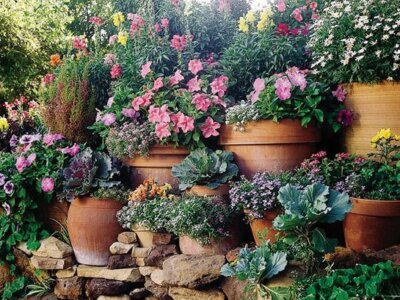The bright veiny stems and the vibrant green leaves of the Swiss Chard plant make it one of the most eye-catching greens in the garden. It is also a remarkably nutritious vegetable, leaving little reason as to why people all over won’t want to add it to their gardens. Furthermore, because Swiss Chard does not ship well, it is one of the only ways to have the tasty, gorgeous leaves of your own. Luckily, growing Swiss Chard is pretty easy, whether you prefer to do so in the ground or in a container and whether you live in cold or hot environments, anyone can do it, and this article will show you how.
Planting Swiss Chard
You will want to set the plants out between 2 and 4 weeks before the date of the last frost that you are expecting in the spring. By planting them in the spring, you will ensure they are producing throughout the spring, the summer and even the fall. If you want to put focus on growing them in a fall garden, put the plants out anytime during the end of summer. The plants will be just fine in the heat so long as you keep them sufficiently watered.
When you grow Swiss Chard, you will learn that they tend to work the best in moist, rich soil that has a pH between 6.0 and 6.8. Be sure to plant the Swiss Chard around 12 to 18 inches apart from one another in the most fertile soil you have, and water them right after they have been planted. If you work blood meal, feather meal, cottonseed meal or even composted manure into the ground, the nitrogen-rich material will help the plants grow more easily. You can put them in healthy native soil or nutrient-rich store-bought soil all the same.
Swiss Chard grows the best with an even supply of water that is not too little and not too much. You will want to water the plants regularly, giving between 1 and 1-1/2 inches of water each week, especially if it doesn’t rain. Applying organic mulch, like wheat straw, finely ground leaves and bark will help keep the soil cool. This will also cut down on the amount of weeds that try to spring up around them and they will stay moist. When you mulch the plant, it will also help in the task of keeping the plants and the leaves clean, which may reduce the risk of them contracting any diseases. You can also grow the Swiss Chard indoors, as they do just as well, but be sure that you are giving them the right amount of light in the window or supplementing it with a grow light positioned directly above the plant.
By following this basic outline and ensuring that you are caring for the plants properly from planting to harvest, you’ll be able to enjoy these delicious hard-to-come-by vegetables year after year.








